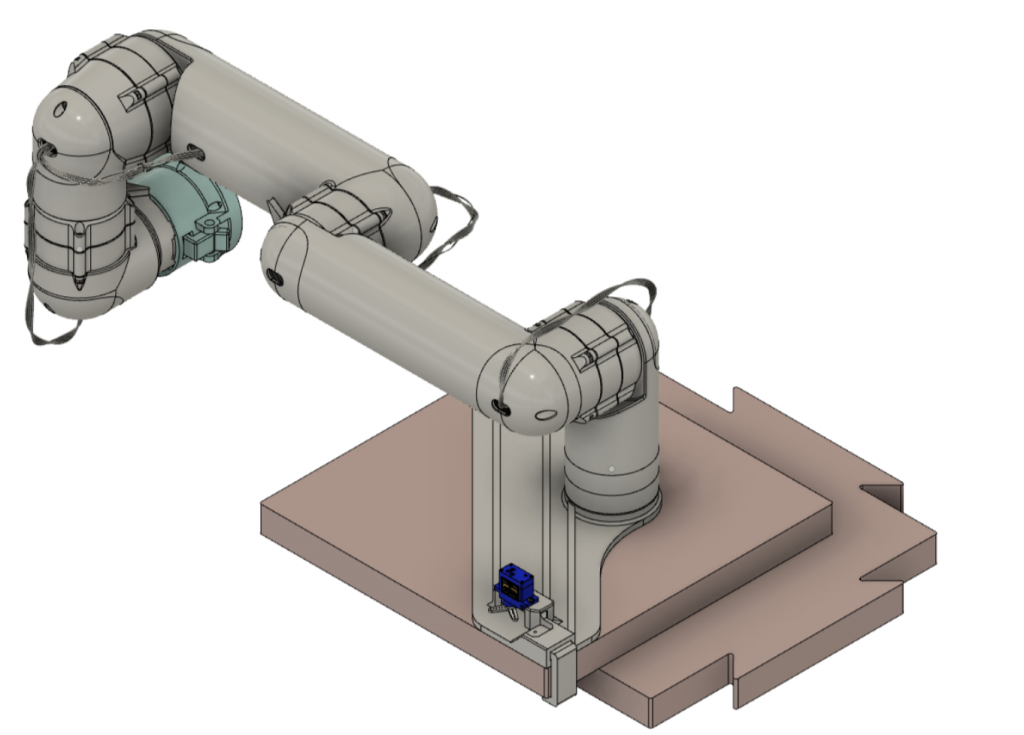Organization
University of Central Florida — College of Engineering and Computer Science
About
The Simulation Exploration Experience (SEE) joins students, industry, professional associations, and faculty in collaborative college-level modeling and simulation learning. Each local (university) team designs, develops, tests, and executes its chosen component(s) of simulated space missions. Teams use open standards for modeling and simulation (M&S), which allow all teams’ distributed components to work together seamlessly to form and execute the larger-scale simulated space mission. Teams are geographically dispersed and interact remotely with other teams. All simulation components interact over the Internet using open modeling and simulation industry standards for systems interoperability.
The UCF team developed and operated the computational and security elements for the SEE 2022 for the international team as well as the lunar base, user documentation and guides. The team supported testing and development for all of the teams under NASA mentorship.
The UCF branch of SEE is tasked with 2 main goals:
- Set up the infrastructure to support the conference.
All teams depend on this to perform integrated tests with their federates connected to a Central RTI Component (CRC) and to be able to watch the 3D component of the entire simulation on NASA’s Distributed Observer Network (DON) on their local machines. All teams must go through the process the SEE-Smackdown repository has documented to download the DON software from NASA. From there, users must connect to our VPN by emailing us to receive the instructions, this way they can securely connect to our server which will be running the CRC.
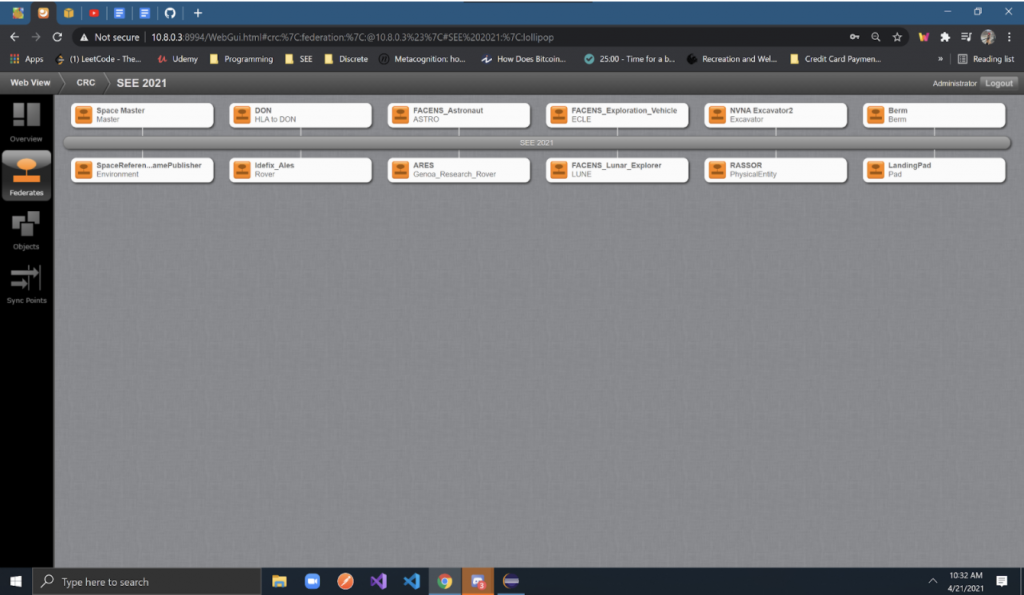
- Design and implement new federates and their corresponding 3D models. UCF 3.0 added a Launch and Landing Pad and a surrounding Berm that are to be built autonomously by a swarm of RASSORs.
- The Launch and Landing Pad federate.

- The Berm federate.
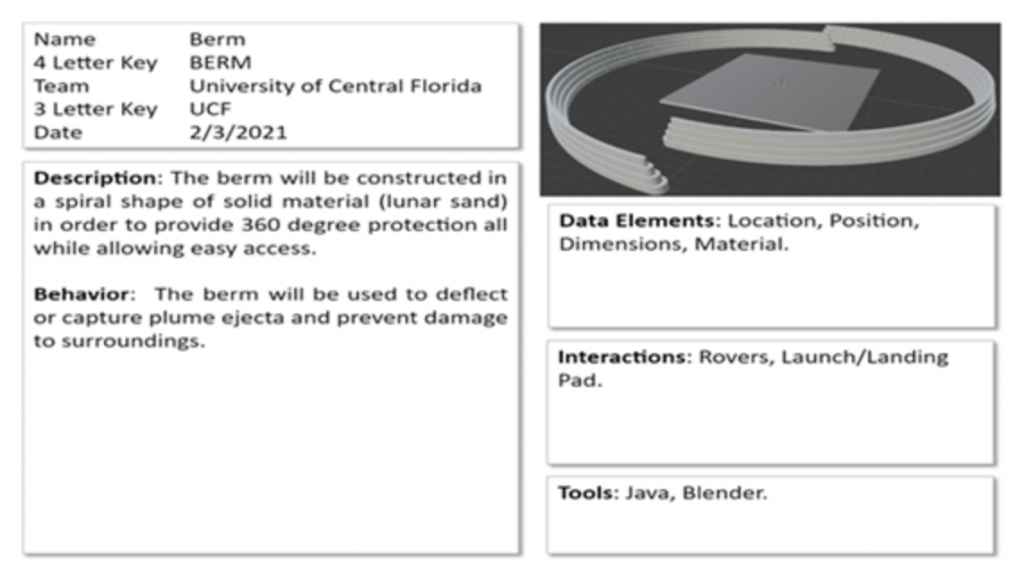
Technologies
The 4 main components for the infrastructure to work: HLA, RTI, HLAtoDON, and DON are described below.
- HLA: High Level Architecture. HLA is a widely used standard for developing distributed simulations. SEE federates are developed using HLA. Teams were provided with a guide: The HLA Tutorial by Bjorn Moller and the HLA Starter Kit to help with federate development.
The HLA Starter Kit provides:
- A Java software framework for developing federates.
- Corresponding Javadoc documentation.
- Set of reference federate examples.
- User guide.
To use the HLA Starter Kit a team needs:
- An HLA RTI(e.g., PITCH or MAK)
- A Java development environment(e.g., Eclipse, NetBeans)
- The core SEE components/resources (Space Master Federate, Reference Frame Publisher Federate, SISO Space Reference FOMS, etc.)
- RTI: Runtime Infrastructure. A Runtime Infrastructure consists of 2 types of software: a local RTI component and a central RTI component.
- The local component is a library installed on each computer. For Java federates it consists of a .jar file.
- The central component (CRC) is an application that manages the federation execution and keeps track of the joined federates. The CRC must be started on the server before any other federate can join. On the server, the Space Master Federate, the Reference Frame Publisher Federate, and the HLA2MPC Federate must be running continuously.
- HLA2MPC. This is the bridge between the HLA simulation and the DON viewer. It can be found here: https://github.com/nasa/DON-Federate-HLA2MPC/tree/master/HLAtoDON. As of 2021, the simulation is located at the South Pole; we are using a new terrain and a new reference frame: SeeSouthPoleLocalFixed.
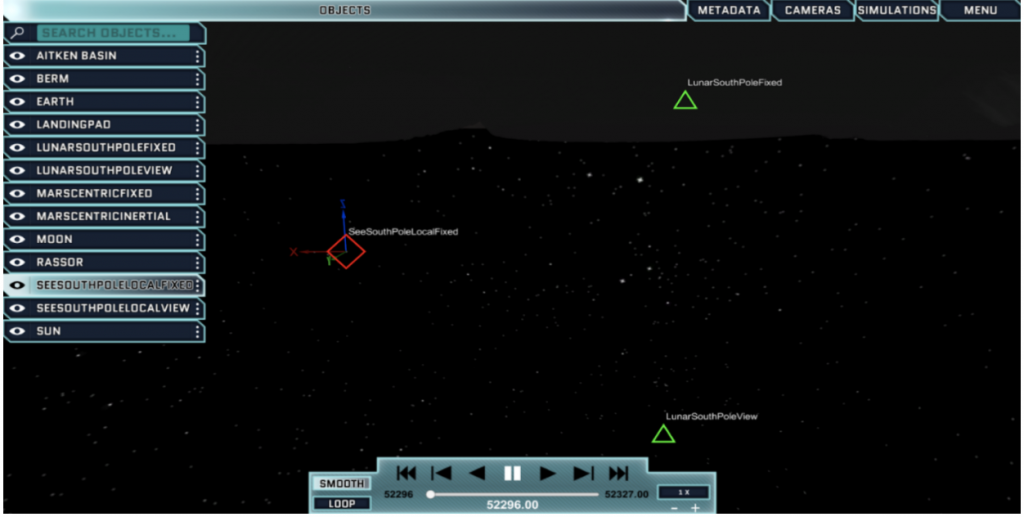
4. DON: Distributed Observer Network. NASA’s Distributed Observer Network is used to view the 3D component of the simulation. The HLA2MPC federate needs to be connected to the CRC to subscribe to positional state information from the simulation each second, convert this to NASA’s Model Process Control (MPC) Language and then send it to DON clients via TCP/IP.
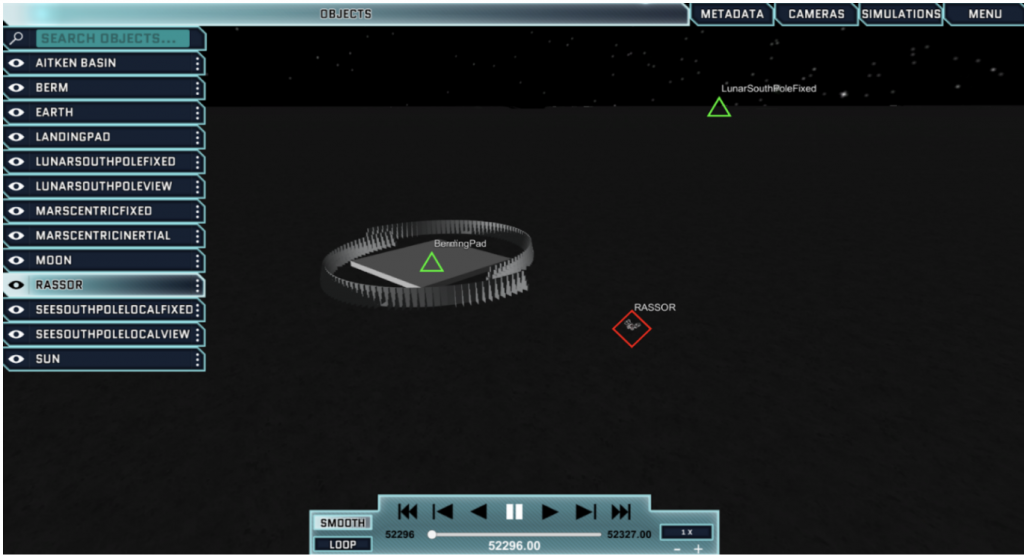
Project Sponsors
Mike Conroy – FSI
Zu Qun Li – FSI
Further Acknowledgements:
Mark Heinrich – UCF
Dr. Samuel Lawrence – NASA Lyndon B. Johnson Space Center
Project Team / Contact Info:
SEE UCF 3.0:
Laura Iniguez – Project manager, 3D models, federate development.
Cameron Carstens – Infrastructure: VPN, AWS Servers, Pitch Web View.
Austin Traub – Federate development, HLAtoDON.
Ngoc Nguyen – 3D models, HLAtoDON.
Adrian Andrade – Federate development.
SEE UCF 2.0:
Frederick Haug
Henrique Cury
Jessica Moreno
Adam Lahjouji
Michael Siripongpibul

